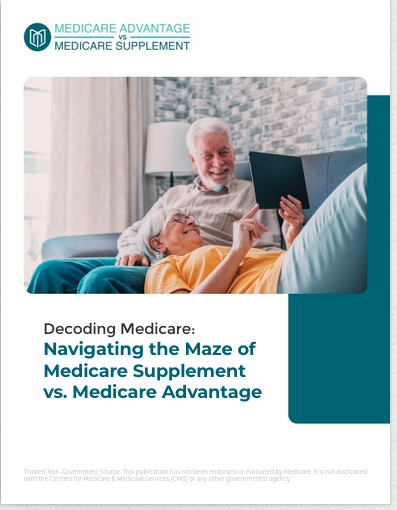Key Takeaways
-
Medicare Part B may be labeled as optional, but delaying it without credible coverage can result in lifelong penalties and coverage gaps.
-
Many retirees find themselves forced to enroll in Part B to maintain access to other benefits or avoid higher out-of-pocket costs.
Understanding the So-Called “Option”
Medicare Part B is technically optional, but the reality for most retirees tells a different story. If you’re nearing age 65, you might assume you can take your time deciding whether to enroll in Part B. After all, it covers outpatient care, doctor visits, preventive services, durable medical equipment, and more—but at a monthly cost. So, skipping it seems like a reasonable way to save money.
However, the structure of Medicare, the rules around penalties, and the way other parts of the system interact with Part B mean that opting out often isn’t a realistic choice.
What Part B Covers—and Why It Matters
Medicare Part B handles the kind of care that doesn’t require a hospital stay. It covers:
-
Office visits with primary care doctors and specialists
-
Lab tests, imaging, and diagnostic screenings
-
Preventive care like mammograms, colonoscopies, and flu shots
-
Mental health services
-
Chemotherapy and other outpatient therapies
-
Durable medical equipment (like wheelchairs and oxygen)
-
Ambulance services
Skipping Part B means you’re responsible for the full cost of these services, unless you have other qualifying coverage. And that’s a huge financial burden for the average retiree.
Enrollment Timelines You Can’t Ignore
You become eligible for Medicare at age 65, and your Initial Enrollment Period (IEP) spans seven months:
-
Three months before the month you turn 65
-
Your birthday month
-
Three months after your birthday month
If you don’t sign up for Part B during your IEP and you don’t have credible coverage—such as through an employer group health plan—you may face a late enrollment penalty. That penalty adds 10% to your monthly premium for each full 12-month period you went without Part B.
In 2025, the standard monthly premium is $185, and it increases for higher-income earners. That means delaying Part B by even two years could raise your premium by 20%—and that increase is permanent.
Employer Coverage and the Credibility Test
If you or your spouse are still working and have employer-provided health insurance, you may be able to delay Part B enrollment without penalty. But that coverage must meet Medicare’s definition of “credible coverage.”
Here’s what matters:
-
The employer must have 20 or more employees if you’re 65 or older.
-
The plan must cover at least as much as Medicare does.
Retiree plans, COBRA, or individual market plans generally do not qualify as credible coverage. And that’s where confusion often leads to costly mistakes.
Special Enrollment Period Rules
If you’re eligible to delay Part B due to credible employer coverage, you get a Special Enrollment Period (SEP) to sign up without penalty. This SEP:
-
Starts the month your employment (or coverage) ends
-
Lasts for 8 months
During this SEP, you can enroll in Part B without facing the late enrollment penalty. But miss that window, and you’ll have to wait for the General Enrollment Period (GEP), which runs from January 1 to March 31 each year. Your coverage then begins July 1, and you’ll likely pay the penalty.
How Other Coverage Types Interact with Part B
Even if you have another type of coverage, skipping Part B may still backfire. Here’s how:
-
TRICARE: Requires Medicare Part B to maintain coverage past age 65.
-
FEHB (Federal Employees Health Benefits): Some plans coordinate well with Medicare, but not all waive costs without Part B.
-
Medigap: Only works with Original Medicare (Parts A and B).
-
Medicare Advantage: You must be enrolled in both Part A and Part B.
-
PSHB (Postal Service Health Benefits in 2025): Medicare Part B is mandatory for most Medicare-eligible annuitants to retain full benefits.
In most of these cases, Part B becomes a gateway to continued coverage, making it more “mandatory” than “optional.”
The Hidden Cost of Waiting
Even if you think you won’t need Part B because you’re healthy now, the cost of going without it can sneak up quickly. A single outpatient procedure or extended use of medical equipment could lead to thousands in medical bills.
Moreover, the late enrollment penalty is just the beginning. Without Part B, you may also face:
-
Coverage Gaps: Your plan may deny claims if it expects Medicare to pay first.
-
Limited Plan Access: You may be shut out from certain Medigap or Medicare Advantage plans.
-
Delayed Access: Enrolling late could mean months without any outpatient coverage.
Medicare Part B and Your Long-Term Planning
If you’re planning to retire at 65, enrolling in Part B as soon as you’re eligible is typically the safest route. But if you plan to work past 65, review your employer coverage carefully.
Here are a few questions to ask your benefits administrator:
-
Does this coverage qualify as creditable under Medicare rules?
-
Will the plan continue after I retire?
-
How does it coordinate with Medicare?
Having this clarity allows you to avoid missteps and prevent penalties.
Medicare Advantage Plans Still Require Part B
Some retirees mistakenly believe that if they enroll in a private Medicare Advantage plan (Part C), they don’t need Part B. That’s not true.
To join a Medicare Advantage plan, you must:
-
Be enrolled in both Medicare Part A and Part B
-
Live in the plan’s service area
So even if a Medicare Advantage plan advertises lower out-of-pocket costs or extra perks, it’s still built on the foundation of Part B.
FEHB and PSHB: Part B Plays a Role
Federal retirees, especially those transitioning to the new Postal Service Health Benefits (PSHB) program in 2025, must be especially careful. PSHB enrollees who are eligible for Medicare are required to enroll in Part B to retain full plan benefits—unless exempted under specific criteria, such as being retired before January 1, 2025.
Even under the FEHB system, many plans reduce your costs only if you have Part B. Without it, your share of costs—especially for outpatient services—could be significantly higher.
What Happens If You Simply Don’t Enroll
Some retirees assume they’ll be able to “get by” without Part B. But unless you have truly comprehensive other coverage, you’re exposing yourself to both financial and administrative risk.
Here’s what you may face:
-
Rejection from certain Medigap or Advantage plans
-
Denied claims when Medicare is supposed to be primary
-
Long wait periods to get back into Medicare
-
Penalties that last a lifetime
How to Avoid Penalties and Pitfalls
To stay in control of your healthcare costs and coverage, follow these best practices:
-
Enroll in Part B during your Initial Enrollment Period unless you have credible employer coverage
-
If delaying, ensure your coverage is truly credible and keep documentation
-
Mark your calendar for your Special Enrollment Period if retiring later
-
Don’t wait until you need care to figure this out—by then it could be too late
Medicare Part B Isn’t a Luxury—It’s a Lifeline
While it may be labeled optional, Medicare Part B is a critical component of your healthcare security in retirement. The penalties, coverage gaps, and coordination issues that arise from skipping it make it a risk most people can’t afford to take.
If you’re still unsure about whether you should enroll—or when—speak with a licensed insurance agent listed on this website. They can walk you through your unique situation and help you make a confident, informed decision.










